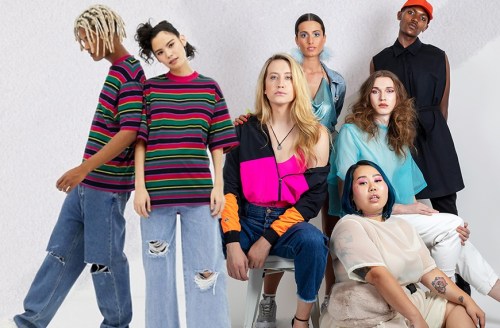When it comes to gender, for a growing number of fashion brands, the feeling is neutral
Lately heritage and new brands have started exploring gender fluid fashion as non-binary dressing becomes more common among millennials and Gen Z.

Within the fashion world of (millennial) pink being for girls and blue for boys, there’s a huge white space. “Statistics show 38 percent of Gen Z-ers ‘strongly agreed’ that gender no longer defines a person as much as it used to, and 27 percent of millennials felt the same way,” says Christina Zervanos, the head of PR at The Phluid Project, a brand built on the concept of genderless dressing. “These generations are the future of retail, accounting for $143 billion in spending in the next four years.”
As a result, a growing number of fashion brands are starting to think outside the binary box. Over the last few seasons, luxury designers like Gucci, Saint Laurent, and Haider Ackerman have held coed runway shows. Moda Operandi debuted its first unisex streetwear collection earlier this year, and Zara started releasing ungendered collections in 2016 with models of both sexes styled in the same clothes. More notably, a crop of new brands like Agender and Rebrand have popped up to cater to consumers who don’t want to be told what’s men’s or women’s fashion.
Demand for fashion not focused on gender is so high in fact, that when Asos’ released its first unisex collection earlier this year, it became the fourth most popular offering (out of over 800) within a week. As a result, the UK’s largest online retailer is expanding its neutral fashions. So far, it’s focused on streetwear: sweatshirts, tees, and other casual staples most people grow up wearing regardless of gender.
“Designers create clothing that caters to everyone by not keeping things limited and one-dimensional.”
Arguably, this is the case with the majority of unisex clothing on the market at the moment: There are fewer instances of men in skirts or dresses than there are women in pants and suits within this category. But they do exist, and as genderless fashion finds its footing in the mainstream, it’s creating more places to shop for all people interested in exploring non-binary dressing, including members of the LGBTQI+ community.
Italian brand Francesco Russo now makes upscale stilettos in men’s sizes, New York City brand Telfar, a recipient of the Council of Fashion Designers of America (CFDA) Fashion Fund, creates luxe leather purses marketed toward men, and The Phluid Project has a sprawling brick and mortar space in downtown NYC at a time when physical stores are closing down in droves. “To be able to play and experiment through fashion and beauty in a judgment-free space is the best way to learn who you are and come into your own” Zervanos says. “Designers create clothing that caters to everyone by not keeping things limited and one-dimensional.”
And it’s not just brands contemplating how gender norms (or a lack thereof) will inform fashion moving forward. In February the CFDA added a unisex/non-binary option for New York Fashion Week—four brands showed in this category, with an additional 12 designers showing unisex collections in their traditional categories. The decision to offer more options than men’s and women’s for fashion shows came after witnessing “a growing number of designers whose collections are not delineated by gender,” says Marc Karimzadeh, a spokesperson for the CFDA. “These designers reflect the cultural momentum.” It’s a shift many in the fashion industry are watching carefully.
The momentum of millennials and Gen Z-ers to drive change is undeniable. Here’s how they’re influencing the travel industry. And creating new community spaces within the wellness scene.
Sign up for the Well+Good SHOP Newsletter
Get exclusive deals on wellness, beauty, fitness, and food products that have been hand-picked by our editors.
Got it, you've been added to our email list.







